“Stripping” the facial artery
Speaker

Daniel MUSZALSKI
Argentina
Especialista en Medicina Interna. * Especialista en Dermatología. * Miembro titular de la Sociedad Argentina de Dermatología (SAD). * Miembro del grupo de trabajo de Dermatología Estética (SAD). * Consultor de Allergan Aesthetic (Manejo de Efectos Adversos con Rellenos de Ácido Hialurónico en lationoamerica – de México a Argentina). * Docente del Curso Internacional de Anatomía Aplicada en Cadáveres con enfoque en Toxina Botulínica y Rellenos Faciales – UBA. * Director y docente de tres Cursos en Dermabaires: 1. Curso Intensivo de Aplicación de Rellenos de Ácido Hialurónico Panfacial. 2. Curso Intensivo de Aplicación de Toxina Botulínica Panfacial, Cuello, Bruxismo e Hiperhidrosis. 3. Curso Intensivo de Efectos Adversos con Rellenos de Ácido Hialurónico y Adecuada utilización de la Hialuronidasa. * Docente del Curso Superior de Dermatología – Hospital Houssay – Vicente López – Distrito IV – Provincia de Buenos Aires. * Docente de la Escuela latinoamericana de Dermatología Médica. * Docente de la Diplomatura en Cicatrización de Heridas (AIACH). * Colaborador en la Revista Piel Latinoamericana. PUBLICACIONES NACIONALES E INTERNACIONALES (últimos 4 años): 2018:- Autor del artículo “Relleno de surcos nasolabiales con ácido hialurónico – No minimicemos el peligro”, Revista Piel Latinoamericana – vol. 420. – Autor del artículo “Reponiendo volumen en la región mentoniana” – Revista Piel Latinoamericana – vol. 423. – Autor del artículo “Rinomodelación con ácido hialurónico”, Revista Piel Latinoamericana – vol. 426. – Autor del artículo “Relleno de la Fosa Temporal con ácido hialurónico”, Revista Piel Latinoamericana – vol. 432. – Autor del artículo “Hialuronidasa: nuevo protocolo de Altas Dosis ante isquemia/ necrosis por inyección de rellenos de ácido hialurónico”, Revista Piel Latinoamericana – vol. 426. 2019:- Autor del artículo “Neoformación de colágeno tras la aplicación intradérmic de ácido hialurónico reticulado”, Revista Piel Latinoamericana – vol. 438. – Autor del artículo “Tratamiento de las infecciones tardías asociadas a inyectables de ácido hialurónico, basado en el esquema formulado por Marusza y Netsvyetayeva”, Revista Piel Latinoamericana – vol. 441. – Autor del artículo “Relleno de puntos orbiculares externos con Ácid Hialurónico”, Revista Piel Latinoamericana – vol. 444. 2020:- Autor del artículo “Eventos vasculares isquémicos en tratamiento de adiposidad localizada con ácido desoxicólico o desoxicolato de sodio”, Revista Piel Latinoamericana – vol. 456. – Coautor del artículo “Antisépticos en procedimientos invasivosestéticos y no estéticos”, Revista Piel Latinoamericana – vol. 453. 2021:- Autor del artículo “Sindrome de Nicolau (necrosis frontal por relleno de ácidohialurónico): a propósito de un caso”, Revista Piel Latinoamericana – vol. 465. – Autor del artículo “Covid-19 y Rellenos de Ácido Hialurónico” – Revista Piel Latinoamericana – vol. 470. – Coautor del artículo “Lesiones cutáneas deprimidas en puntos de inyección de toxina botulínica: a propósito de dos casos” – Revista Piel Latinoamericana – vol. 473. – Autor del artículo “Hipopigmentación post Luz Pulsada Intensa (IPL) tratada con microneedling y bimatoprost 0,03% tópico: a propósito de un caso” – Revista piel Latinoamericana – vol. 476. DISERTACIONES INTERNACIONALES (últimos 4 años): 2019:- Disertante en el 3º Congreso Centroamericano de Medicina Estética – 1º Congreso en Costa Rica de Medicina Estética y Rejuvenecimiento 22 al 24/08/2019. Temas: “Manejo de Eventos Isquémicos con Rellenos de Ácido Hialurónico”, “Abordaje de la Fosa Temporal con Rellenos de Ácido Hialurónico” y “Hialuronidasa: adecuada utilización en Efectos Adversos con Ácido Hialurónico” – Hotel Wyndham Herradura, San José, Costa Rica. – Disertante “Rinomodelación con Ácido Hialurónico” 2º Symposium Internacional de Dermatología – CILAD – Buenos Aires – Paseo la Plaza. 2020:- Disertante de “Rinomodelación: adecuado abordaje para minimizar efectos adversos isquémicos y amaurosis” – Consejo latinoamericano y del Caribe de Medicina estética y Antiage – Guatemala (Modalidad virtual). – Disertante de “Abordaje de áreas de riesgo con Rellenos faciales” – II Congreso Boliviano de Medicina estética – ASOBOME (Modalidad virtual). – Disertante de “Infecciones en tratamientos con Rellenos, Prevención y Tratamiento” – Consejo latinoamericano y del Caribe de Medicina estética y Antiage (Guatemala) – (modalidad virtual). – Disertante de “Correcto abordaje de la región infraorbitaria con Rellenos de ácido Hialurónico – 1ºJornada Médico científica Virtual – Asociación de Medicina estética de Panamá y Afines (Modalidad virtual). – Disertante de “Recurrencia herpética vs. necrosis en tratamientos inyectables con ácido Hialurónico” – 1º Simposio Sociedad de Medicina estética Dominicana (SOMED) – Modalidad virtual. 2021:- Disertante de “Toxina botulínica en Sonrisa gingival, a veces un gran desafío” 2º Congreso Científico de Medicina estética y Antiaging – Perú – Asocime (Modalidad virtual). – Disertante de “Anatomía aplicada a Rellenos de ácido Hialurónico en la región nasal” – Jornadas ASOHMEI – Asociación Hondureña de Medicina Estética Integral (Modalidad virtual). – Disertante de “Covid-19 y Rellenos de Ácido Hialurónico” – VII Congreso Internacional de Dermatología Clínica, Estética y Cosmética – Cali – Colombia (Modalidad virtual). – Disertante de “Hialuronidasa en Medicina Estética” – mesa redonda “Covid-19 y tratamientos estéticos” – III Congreso boliviano de Medicina Estética – ASOBOME (Modalidad virtual). – Disertante de “Abordaje de áreas de riesgo de Amaurosis con Rellenos de Ácido Hialurónico” – Congreso de la Asociación de Medicina Estética de Panamá y Afines – AMEPA (Modalidad virtual). DISERTACIONES NACIONALES (últimos 4 años): 2018:- Disertación Pre Lauching Volite: Juvederm Volite – Calidad de la Piel – Allergan Medical Institute – Disertante: “Ojeras – Relleno y Piel”, XXIII Congreso Argentino de Dermatología – Rosario – Santa Fe – Disertante: JUVEDERM VOLITE y categoría SKIN QUALITY en la Actualización Científica MD Codes Distinction Tour 2018 – Disertante: “Técnicas mínimamente invasivas en la región nasal” Jornadas de Terapéutica e Innovaciones en Dermatología – SAD – Disertante “Úlceras por Modelantes” – (03/11/2018) Diplomatura en Cicatrización de Heridas – AIACH 2019:- Disertante en el Congreso Nacional de Dermatología Quirúrgica, Estética y Láser – “Rinomodelación” – Sheraton Libertador Hotel. 2021:- Disertante de “Hialuronidasa, infaltable en el arsenal de todo inyector” – Congreso Nacional de dermatología Quirúrgica, Estética y Láser – Sociedad Argentina de Dermatología – SAD – (Modalidad virtual). – Disertante de “Prevención de Amaurosis en tratamiento con Fillers” – BAAS Congress 2021 (Modalidad presencial). – Disertante de “Reacciones inflamatorias tardías en sitios de rellenos, post infección por covid19 / vacunación” – Webinar Grupo de Trabajo de Reacciones Cutáneo – mucosas adversas a Drogas – Sociedad Argentina de Dermatología CURSOS / TALLERES INTERNACIONALES – DIRECTOR Y/O DOCENTE (últimos 4 años): 2018:- Docente del Curso Internacional de Anatomía aplicada en cadáveres con enfoque en Toxina botulínica y rellenos faciales – carga horaria 16hs. – Director y docente de tres Cursos en Dermabaires: 1. Curso Intensivo de Aplicación de Rellenos de Ácido Hialurónico Panfacial. 2. Curso Intensivo de Aplicación de Toxina Botulínica Panfacial, Cuello, Bruxismo e Hiperhidrosis. 3. Curso Intensivo de manejo de Efectos Adversos con Rellenos de Ácido Hialurónico. 2019:- Docente del Curso Internacional de Anatomía aplicada en cadáveres con enfoque en Toxina botulínica y rellenos faciales – carga horaria 16hs. – Director y docente de tres Cursos en Dermabaires: 1. Curso Intensivo de Aplicación de Rellenos de Ácido Hialurónico Panfacial. 2. Curso Intensivo de Aplicación de Toxina Botulínica Panfacial, Cuello, Bruxismo e Hiperhidrosis. 3. Curso Intensivo de manejo de Efectos Adversos con Rellenos de Ácido Hialurónico. 2020:- Director y docente de tres Cursos en Dermabaires: 1. Curso Intensivo de Aplicación de Rellenos de Ácido Hialurónico Panfacial. 2. Curso Intensivo de manejo de Efectos Adversos con Rellenos de Ácido Hialurónico. 2021:- Director y docente de tres Cursos en Dermabaires: 1. Curso Intensivo de Aplicación de Rellenos de Ácido Hialurónico Panfacial. 2. Curso Intensivo de manejo de Efectos Adversos con Rellenos de Ácido Hialurónico. – Docente en el Curso Internacional de Tercio Inferior y Volux ® (Curso digital) AMI (Allergan Medical Aesthetic). Módulo 7: Manejo de complicaciones en el tercio inferior. – Director y docente del Curso Latinoaméricano “Manejo de complicaciones con fillers de ácido hialurónico avanzado” – AMI (Allergan Medical Aesthetic). Consta de 4 módulos y es semestral. Cursadas en primer y segundo semestre. CURSOS / TALLERES NACIONALES – DIRECTOR Y/O DOCENTE (últimos 4 años): 2018:- Docente Colegio de Médicos de la Pcia. de Bs. As. – Escuela Superior de Educación Médica – Curso Superior de Dermatología – Disertación: “Toxina Botulínica”. – Docente del Workshop Vycross Lift modalidad Hands – Allergan Medical Institute – Docente – I Curso Intensivo AMI – Módulo F: Manejo de Objeciones – Eventos Adversos Fillers y Módulo E: Piel – VOLITE. – Docente Colegio de Médicos de la Pcia. de Bs. As. – Escuela Superior de Educación Médica – Curso Superior de Dermatología – Disertación: Urticaria y angioedema. – Docente del Workshop Vycross Lift – MD Codes modalidad Teórico-práctica – AMI – Docente Colegio de Médicos de la Pcia. de Bs. As. – Escuela Superior de Educación Médica – Curso Superior de Dermatología – Disertación: “Rellenos Faciales”. – Docente Taller teórico – práctico Vycross Lift – Allergan Medical Institute. – Disertante Volite: Juvederm Volite – “II Curso Intensivo AMI – Nivel Avanzado” – Docente del Taller Hands On Vycross Lift y Volite en Dermabaires. 2019:- Docente del Taller Hands On Vycross II – Curso AMI – en Dermabaires. – Docente del Taller Hands On Vycross III – Curso AMI – en Dermabaires. – Disertación sobre Uso de la Hialuronidasa en Efectos Adversos asociados a la Aplicación de ácido Hialurónico – Allergan Medical Institute – Entrenamiento de speackers. – Docente del Taller Hands On Vycross II (04/07/2019) – Curso AMI – en Dermabaires. – Curso de Armonización Facial – Md Codes puntos de Estructura y Refinamiento, Teórico Práctico Live Demo – Hospital Italiano de Buenos Aires. – Disertación sobre Uso de la Hialuronidasa en Efectos Adversos asociados a La Aplicación de ácido Hialurónico – Allergan Medical Institute. 2021:- Docente Colegio de Médicos de la Pcia. de Bs. As. – Escuela Superior de Educación Médica – Curso Superior de Dermatología – Disertación: “Toxina Botulínica”. – Docente Colegio de Médicos de la Pcia. de Bs. As. – Escuela Superior de Educación Médica – Curso Superior de Dermatología – Disertación: “Rellenos Faciales”.
Source event
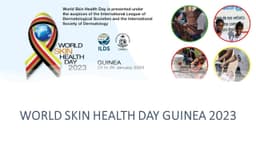
WORLD SKIN HEALTH DAY – GUINEA 2023
A. Background:
The purpose of the World Skin Health Day (WSHD) is to recognize and promote skin health in the world. In stemmed in 2012 from the International League of Dermatological Societies (ILDS) and the International Society of Dermatology (ISD) and there have been several official WSHD activities in countries worldwide, totalling a reach of more than 11 million people.Around the world, members of the ILDS and ISD undertake activities to recognize and promote skin health; including Screening clinics, care activities, public seminars, marches and social media campaigns, the campaign has a global reach. Taking part in WSHD helps raise awareness of the wider impact of skin diseases, as well as supporting people in need of treatment in their communities local.
B. Why skin health?
Skin diseases are one of the most common human diseases. The 11th revision of the WHO International Classification of Diseases (ICD-11) includes more than 2,000 skin diseases or related to the skin. According to the American Academy of Dermatology, there are in fact more than 3,000 diseases of skin and the dermatologist is in charge of the management of these pathologies. It permeates all cultures, occurs at all ages and affects between 30% and 70% of individuals, with even higher rates in at-risk subpopulations (Hay R, Bendeck SE, Chen S, et al 2014). However, skin conditions and diseases are often ignored or given low priority by health authorities because they do not, on the whole, kill people (WHO 2005). Skin diseases also have a serious impact on people’s quality of life, leading to loss of productivity at work and school, and discrimination due to disfigurement. In many regions of the world, people with skin conditions do not have access to support and adequate treatment. In view of this, the ILDS and ISD initiated the WSHD initiatie to help raise awareness and better understand skin diseases. During these days, the communities of areas underserved in management of dermatoses are provided
with adequate skin care free of charge.
C. About -The International League of Dermatological Societies (ILDS):
The International League of Dermatological Societies (ILDS) is a non-governmental organization that promotes the improvement of skin care, education and science throughout the world. It brings together more than 190 member companies from more than 80 countries. The ILDS has access to the experience of over 200 000 dermatologists. We celebrate and share the wide range of approaches to health and disease of the skin that exist in the world. -The International Society of Dermatology (ISD) was founded in 1959. The organization was initially the “Society Association of Tropical Dermatology”. The Society was then particularly interested in the dermatology world and tropical skin diseases, but since covers also all aspects of dermatology such as basic sciences, venereology and public health and to teaching dermatology in developing countries.-Dermatological Clinic: The mission of the Dermatological Clinic is to provide adequate dermatological care that contribute to improving the quality of life of patients. It allows quick consultations and affordable as well as accurate diagnoses and treatment plans via a web and mobile platform secured with an autonomous and affordable payment option. Various barriers limiting access to Dermatologist consultations are then eliminated.
E. What will happen for this 4th Edition:
1st Phase: From January 23 to 26, 2023: An international congress in Dermatology will be held in Guinea with the participation of nearly 100 speakers who many of whom are world leaders in dermatological sciences. A hybrid mode is selected for this congress and it will be held at La Source University in Conakry. For this congress, the themes are distributed as follows:
23 January 2023
- Theme 1 : Acne and Rosacea (Diagnosis and Treatment)
- Theme 2: Psoriasis (Diagnosis and Treatment)
- Theme 3 : Cosmetic Dermatology (Aging, Botox, Fillers, Lasers
- Theme 4 : Pigmentation (Diagnosis and Treatment)
- Theme 5: Dermatoepidemiology
24 Janvier 2023
- Theme 6 : Teledermatology and AI in Skin Diseases
- Theme 7 : Sexually transmitted diseases et genital dermatology
- Theme 8 : Medical Dermatology and Dermatopathology
- Theme 9 : Tropical Dermatology
- Theme 10 : Covid-19
25 Janvier 2023
- Theme 11 : Rising Stars
- Theme 12 : Atopic Dermatitis and allergology
- Theme 13 : Dermatosurgery
- $Theme 14 Cutaneous Neoplasms
- Theme 15 : Hair Disorders
26 Janvier 2023
- Theme 16 : Pediatric Dermatology
- Theme 17 : Psychodermatology
- Theme 18 : Dermoscopy
- Theme 19 Vesicullobullous disorders and others – Maladies vésiculobulleuses + Autres
- Theme 20: Nail Disorders
The scientific committee
- Prof. Brigitte DRENO MD PhD (head of the Scientific committee / Responsable duScientific Committee)
- Prof. Jean BOLOGNIA MD
- Prof. Dedee MURRELL MD PhD
- Prof. Hassan GALADARI MD
- Prof. Koushik LAHIRI MBBS, DVD(CAL), IFAAD, FIAD, FFAADV, FRCP(Glasgow), FRCP(Edin),FRCP (London)
- Prof. H. Peter SOYER MD, FACD FAHMS
- Prof. Tu Anh DUONG MD, PhD
- Prof. Somesh GUPTA MD
- Dr. Christopher HSU MD
- Prof. Nejib DOSS MD
- Prof. Aleksandra LESIAK MD PhD
- Prof. Monika FIDA MD
- Prof. Franco RONGIOLETTI MD
- Prof. Samira ZOBIRI MD
- Prof. Aldo MORRONE
- Prof. Amor KHACHEMOUNE MD, PhD
- Prof. Enas ATTIA MD
- Prof. Asmahane SOUISSI MD
- Prof. Mohsin AL-DHALIMI MD
- Prof. Roxanna SADOUGHIFAR MD
- Prof. Hamida TURKI MD
- Prof. Dominique TENNSTEDT MD
- Prof. Mohammad JAFFERANY MD, PhD
- Prof. Aimilios LALLAS MD, MSc, PhD
- Prof. Esther FREEMAN MD PhD
- Prof. Joanna NARBUTT MD
The organizing committee
- Dr Ibrahima TRAORE MD, PgDip, MSc (head of the organizing committee / Head of the Organizing Committee)
- Dr. Albertina Onsea MD PhD
- Dr Aboubacar Salematou SYLLA MD, MSc
- Dr. Mohamed Medo SYLLA MD, MSc
- Dr. Aly Badara NABE MD, MSc
- Mr. Balla Moussa DIOUBATE MSc
- Mr. Jaume BOLTA
- Dr. Ibrahima SACKO MD
- Dr. Siaka MARA MD
- Mr. Djenabou KONATE
- Mr. Ibrahima Sory CAMARA*
“Through an agreement between the Union Européenne des Médecins Spécialistes and the American Medical Association, physicians may convert EACCME® credits to an equivalent number of AMA PRA Category 1 CreditsTM. Information on the process to convert EACCME® credit to AMA credit can be found atwww.ama-assn.org/education/earn-credit-participation-international-activities“Live educational activities, occurring outside of Canada, recognised by the UEMS-EACCME® for ECMEC®s are deemed to be Accredited Group Learning Activities (Section 1) as defined by the Maintenance of Certification Program of the Royal College of Physicians and Surgeons of Canada.”
Similar videos
Source event Program
Fondation René Touraine: an Introduction
Thomas A. Luger Dr. Dr.h.c
Acne and Rosacea: Diagnosis and Treatment - Diagnostic et thérapeutique de l'acné et de la rosacée
CHAIR : Pr Brigitte DRENO MD PhD (France)
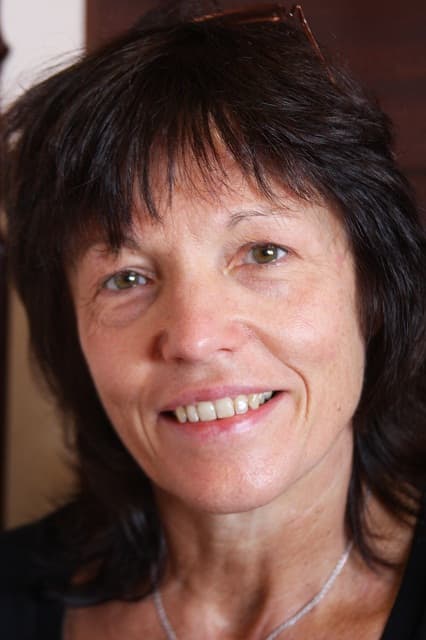
Le microbiome cutané : un acteur central dans l’acné inflammatoire (The Skin Microbiome: a central player in inflammatory acne)
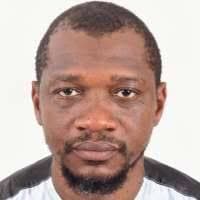
Spécificités de l’Acné dans la peau de couleur (Particularities of Acne in Skin of Colour)
Psoriasis: Diagnosis and therapeutic | Psoriasis: Diagnostic et théurapeutique
Chair: Pr Adam REICH MD, Phd (Pologne)

Interest in small molecules in psoriasis (Intérêt des Small molécules dans le psoriasis)

General pustular psoriasis: current guidelines and future treatments

Cardiovascular comorbidities and psoriasis
Cosmetic Dermatology (Aging, Botox, Fillers and Lasers) - Dermatologie esthétique (Vieillissement, Botox, Injections de comblement et Lasers)
CHAIRS : Pr. George KROUMPOUZOS, Pr. Koushik LAHIRI , Dr. Khaled TURKI, Pr Hassan GALADARI

Botulinum toxin: Beyond Cosmetic Indication

Chemical peels and skin diversity

My experience with Microneedling – From trichology and aesthetic medicine to clinical dermatology

How to deal with facial scars in darker skin with Fractional CO2 laser?
Koushik Lahiri MBBS, DVD(CAL), IFAAD, FRCP (Edin), FRCP (London)
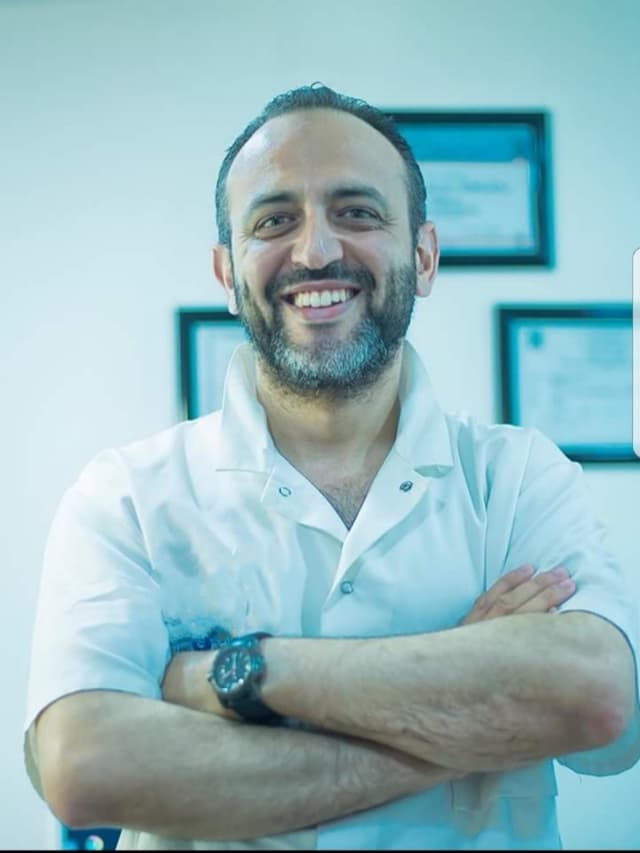
Management of cutaneous scars by combination of methods

What’s all the Daxi-talk? Science behind Daxxify, how is it different from other neuromodulators, the recommended dilution and injection techniques
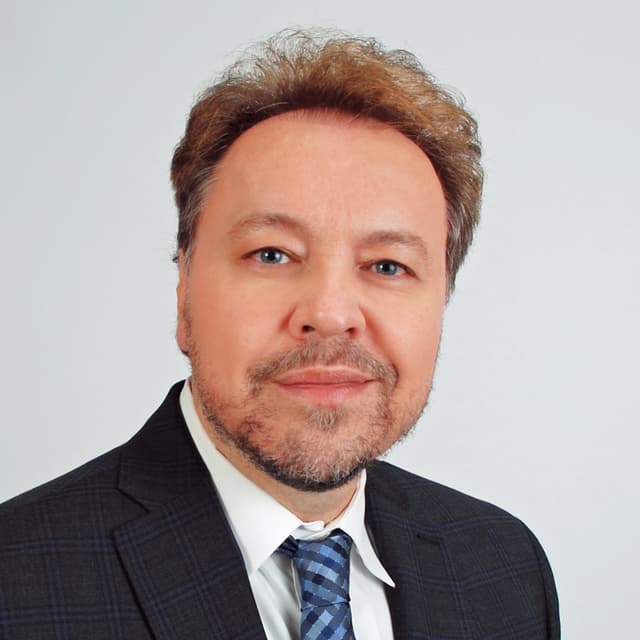
Complications of Fillers in the Perioral Area: Prevention and Management

Cicatrices cutanées : Lecture puis écriture
Khaled Turki MD
Pigmentation disorders: diagnostic and therapeutic - Troubles de la Pigmentation : diagnostique et thérapeutique
CHAIRS : Pr Koushik LAHIRI ; Pr Firas AL-NIAIMI, Pr. Rashmi SARKAR
Melanocytic lesions in children
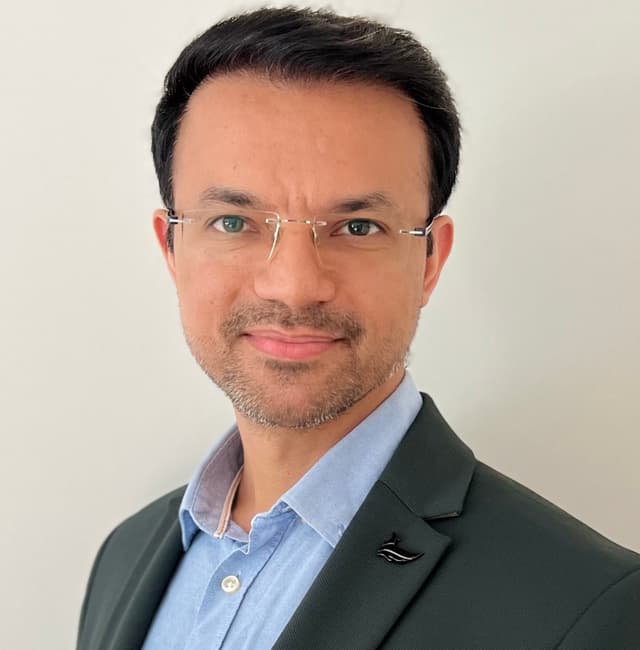
To Study the Efficacy of Cultured Versus Non-Cultured Melanocyte Transfer in the Surgical Management of Stable Vitiligo: A Randomized Controlled Trial
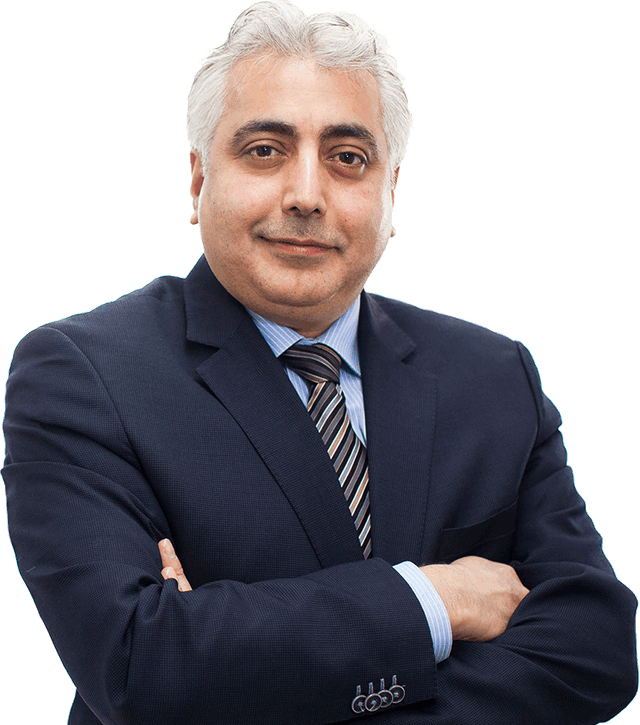
Updates on the pathophysiology of melasma

Vitiligo minigrafting : and experience of three decades
Koushik Lahiri MBBS, DVD(CAL), IFAAD, FRCP (Edin), FRCP (London)
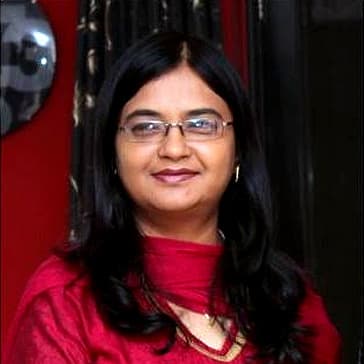
Melasma
Dermatoepidemiology - Epidémiologie en dermatologie
CHAIRS : Pr. Robert Dellavalle, Pr. Esther FREEMAN

The Global Burden of Skin Disease
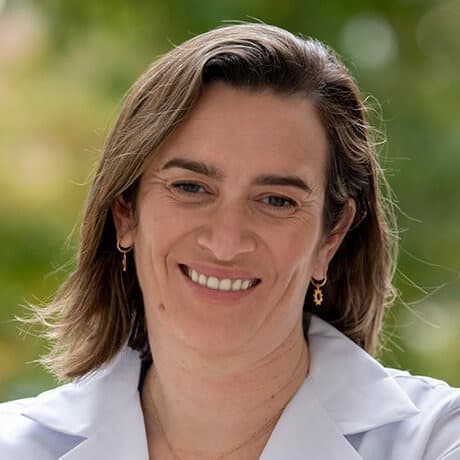
International Alliance for Global Skin Health (GLODERM): A platform for mentorship and collaboration

Dermatology in Public Health The Experience of the San Gallicano Institute in Rome, Italy

Topical steroid misuse menace in India: A silent epidemic of astronomical magnitude
Koushik Lahiri MBBS, DVD(CAL), IFAAD, FRCP (Edin), FRCP (London)
Might interest you
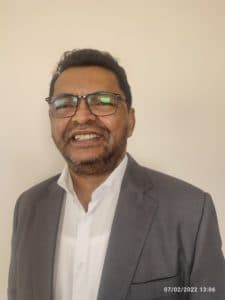
Cutaneous Medicine: Multidisciplinary Approaches in Dermatology
Chair: Prof. Fahafahantsoa Rapelanoro Rabenja,
This course explores the intersection of dermatology with other medical specialties, emphasizing a collaborative approach to diagnosing and managing complex skin disorders. It covers a wide range of topics, including dermatopathology, rheumatology, oncology, and infectious diseases, highlighting how systemic conditions manifest cutaneously. With contributions from experts in various fields, the text provides comprehensive insights into multidisciplinary care, advanced diagnostic techniques, and innovative treatments. Ideal for dermatologists, internists, and specialists, it bridges gaps between disciplines to improve patient outcomes in cutaneous medicine.
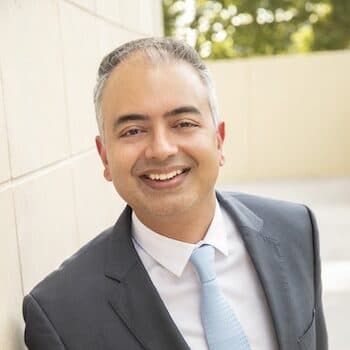
Pigmentation
Chair: Dr Seemal Desai, MD, FAAD
Hyperpigmentation is excess skin color from melanin. Understand melanin synthesis mechanisms and main causes.
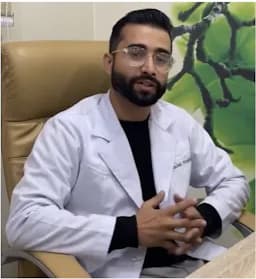
Neglected Tropical Skin Diseases
Chair: Dr. Prajwal Pudasaini, MD
Neglected tropical skin diseases affect poor populations in tropical areas. They include leprosy, mycetoma, and cutaneous leishmaniasis, causing disability and stigma. They receive little attention and resources, leading to poor diagnosis and treatment. Increased awareness and improved healthcare access are needed to help affected communities.
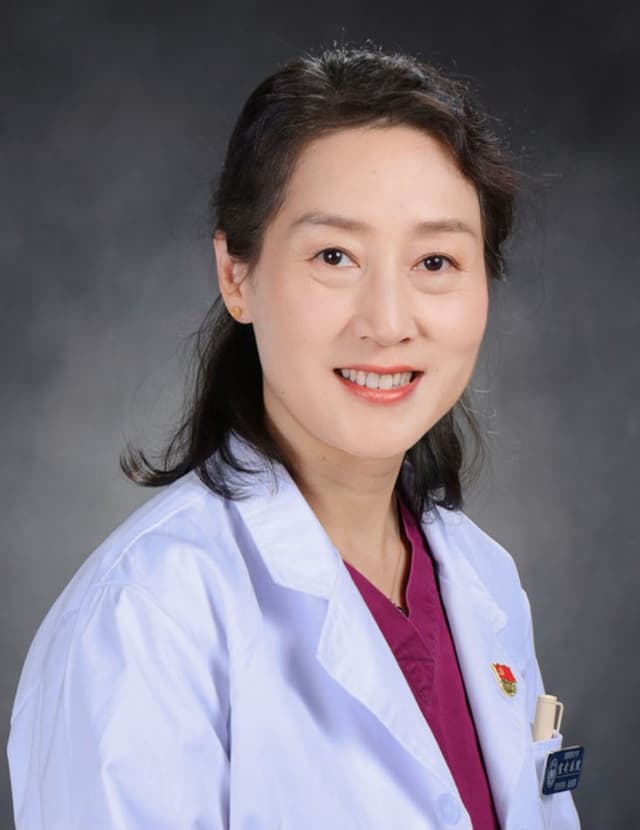
Acne Treatment in China
Chair: Prof. Haiping Zhang, PhD
Acne treatment in China combines traditional methods with modern practices.
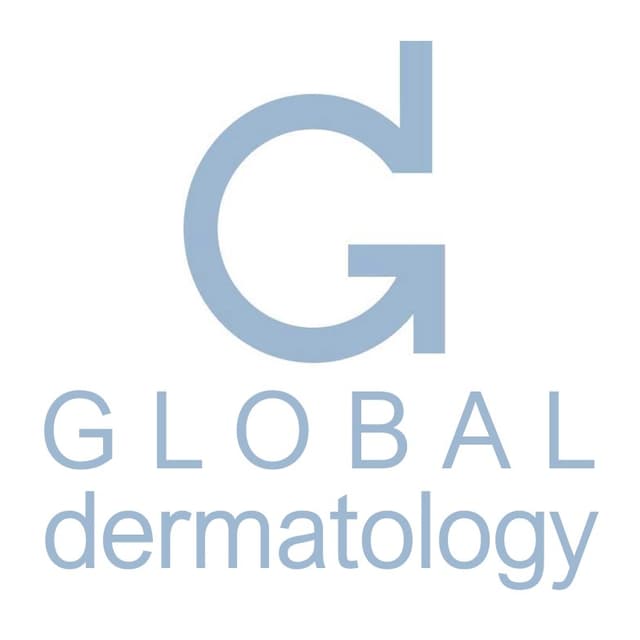
Cyspera Medical Education
Chair: Global Dermatology,
Cyspera® is a topical pigment-correcting treatment formulated with cysteamine, a naturally occurring compound that reduces the appearance of persistent hyperpigmentation, including melasma, post-inflammatory hyperpigmentation, and lentigines. It is known for being non-hydroquinone, suitable for long-term use, and effective on all skin types.
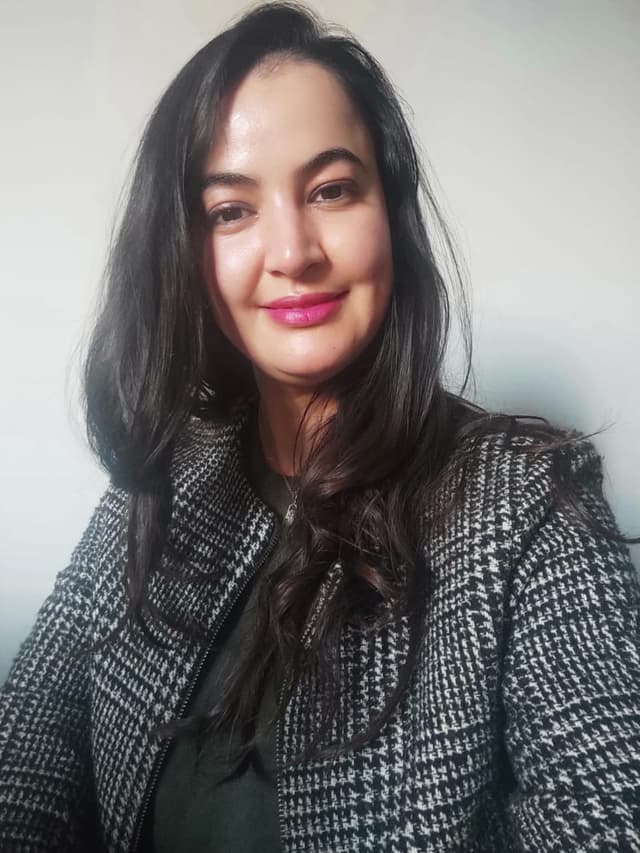
Topographic Dermoscopy
Chair: Prof. Awatef Kelati, MD
Topographic dermoscopy refers to the region-specific application of dermoscopic examination, emphasizing the unique morphological patterns found across different anatomical sites. On facial skin, the dermoscopic assessment requires recognizing patterns influenced by the high density of pilosebaceous units and sun-induced changes, often presenting pseudonetworks and annular-granular structures. The ear, with its thin skin and sebaceous gland concentration, reveals specific vascular and follicular clues important in distinguishing benign from malignant lesions.
On the chest and back, where the skin is thicker and sun exposure varies, dermoscopy must account for irregular pigment distribution and architectural disorder, especially in large nevi or early melanomas. Limb lesions may show distinctive features due to mechanical friction, hair density, and vascular variations, demanding precise interpretation to identify atypical nevi or skin cancers.
Palmar and plantar dermoscopy highlights the parallel ridge pattern critical for melanoma diagnosis, contrasting with benign acral patterns like the parallel furrow or lattice-like structures. Scalp and hair disorders benefit from trichoscopy, where dermoscopic evaluation reveals specific signs such as yellow dots, broken hairs, or black dots, aiding in the diagnosis of alopecia areata, androgenetic alopecia, or tinea capitis.
In nail disorders, onychoscopy enables visualization of melanonychia, hemorrhages, and nail matrix changes, crucial for distinguishing subungual melanoma from benign causes like trauma or fungal infection. Mucosal dermoscopy, though technically challenging, provides diagnostic clues in pigmented lesions of the lips, genitalia, or oral mucosa, requiring adaptation to moist, non-keratinized surfaces.
Finally, ultraviolet dermoscopy reveals a unique application: scabies mites fluorescing bright green under UV light, enhancing detection when traditional visualization fails. Topographic dermoscopy thus demands both anatomical knowledge and technical adaptation to maximize diagnostic accuracy across diverse body sites.
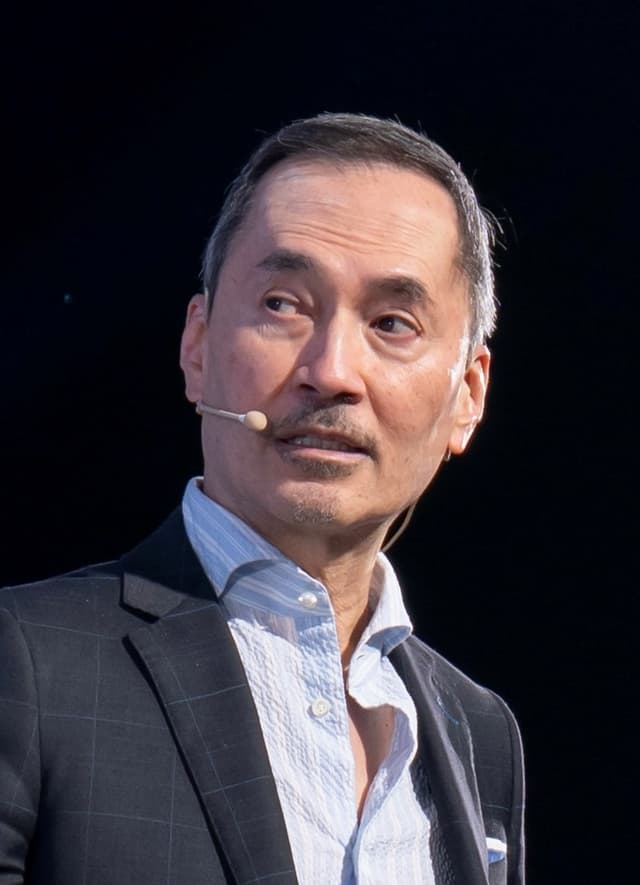
ACNE
Chair: Dr. Jerry Tan, MD
The ACNE | Education Series, led by Dr. Jerry Tan, is a comprehensive global medical education initiative designed to enhance the understanding and skills of dermatologists and healthcare practitioners regarding acne. Participants will gain insights from leading international experts on the latest advancements in acne research, innovative treatment options, and patient-centered care approaches. The event features interactive discussions, live Q&A sessions, and evidence-based strategies, all at no cost. The esteemed faculty includes specialists from the USA, Italy, France, the UK, Singapore, Greece, Australia, Canada, and Germany. This is a valuable opportunity to improve clinical competencies and stay updated on current acne management practices.
Attendees will acquire up-to-date knowledge on acne pathophysiology, new therapeutic options, and patient-oriented management strategies to optimize clinical outcomes in acne treatment. The session will also provide practical insights through expert-led discussions and evidence-based approaches.
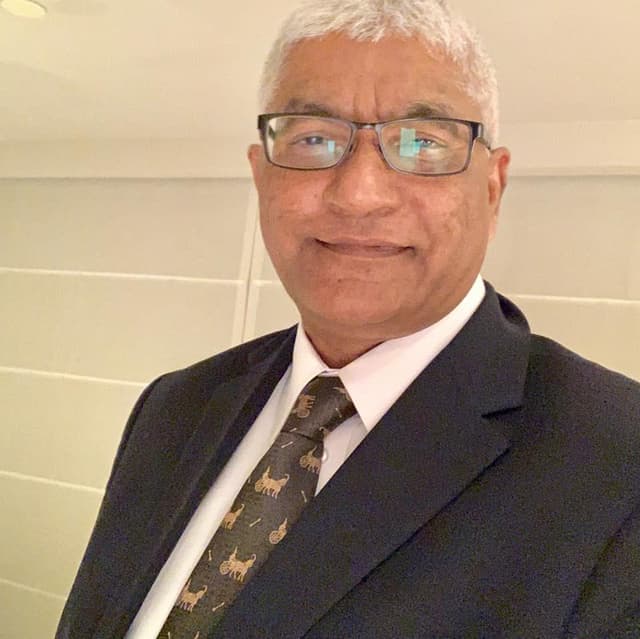
Psychodermatology
Chair: Prof Mohammad Jafferany, MD
This specialized course explores the vital intersection between dermatology and mental health, equipping clinicians with the knowledge and tools to manage psychodermatological conditions effectively. Through a blend of theoretical knowledge and practical application, participants will learn to diagnose and treat dermatological delusional disorders, identify psychiatric comorbidities in skin disease patients, and implement mental health strategies for chronic dermatoses. The curriculum also examines psychological factors in cosmetic dermatology and provides cutting-edge screening techniques for body dysmorphic disorder, including modern digital manifestations like Zoom dysmorphia. Adopting a patient-centered approach, the course emphasizes multidisciplinary management of conditions where psychological and dermatological factors interact. Participants will gain expertise in recognizing psychiatric components of skin diseases, addressing the emotional
burden of chronic conditions, and applying ethical principles in cosmetic practice. The training combines expert instruction with case-based learning to bridge theory and clinical practice. Designed for dermatologists, psychiatrists, psychologists, and primary care providers, this program enhances clinicians' ability to deliver holistic care that addresses both the visible and invisible aspects of skin disorders. Upon completion, practitioners will be better prepared to manage complex psychodermatological cases while improving patient outcomes through integrated mind-skin healthcare.

Tropical Dermatology and Neglected Tropical Dermatoses
Chair: Prof. Fahafahantsoa Rapelanoro Rabenja,
Dermatological diseases, particularly neglected tropical diseases (NTDs) with skin manifestations like deep mycosis (chromoblastomycosis, sporotrichosis, mycetoma), scabies, leprosy, lymphatic filariasis, and cutaneous leishmaniasis, pose major challenges for healthcare systems in resource-limited regions of Africa, Asia, and Latin America. These conditions severely affect vulnerable populations, suffering from frequent underdiagnosis and inadequate treatment that exacerbates suffering. Diseases such as atopic dermatitis are also under consideration for inclusion as skin NTDs through collaborative efforts involving ISAD, ASDV, and WHO. Furthermore, albinism, highly prevalent in sub-Saharan Africa, presents significant social challenges including stigmatization and occult beliefs. Despite these complex difficulties, the field is undergoing a historic transformation driven by science and technology, particularly artificial intelligence (AI), which offers tangible tools for improving diagnosis, treatment, and prevention. The participation of global experts facilitates vital knowledge exchange, exploration of innovative solutions, and helps address critical shortages of human and material resources in remote areas.
Learning Objective:
Understand the complex challenges posed by dermatological diseases, especially skin NTDs and conditions like albinism, in resource-limited settings, and recognize the critical role of global collaboration, technological innovation (particularly AI), and expert knowledge exchange in developing solutions to improve diagnosis, treatment, prevention, and resource allocation.

Dermoscopy
Chair: Prof Awatef Kelati, MD
This comprehensive dermoscopy course provides dermatologists and healthcare professionals with essential skills in skin lesion evaluation, covering fundamental principles through advanced diagnostic applications across five key areas: global dermoscopy practices, pigmented lesion analysis (including differentiation of benign and malignant patterns), specialized techniques for skin of color, skin cancer detection (melanoma and non-melanoma), and general dermatological conditions (inflammatory, infectious, and hair/nail disorders). Participants will develop proficiency in recognizing diagnostic patterns, adapting techniques for diverse skin types, and applying dermoscopic algorithms, ultimately enhancing their clinical accuracy through a combination of theoretical knowledge and practical case-based learning. The course emphasizes real-world application, addressing both common and challenging scenarios in dermatological practice.
